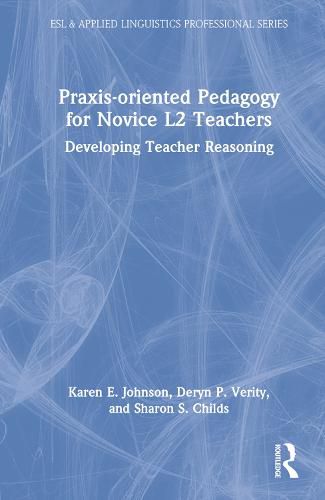Readings Newsletter
Become a Readings Member to make your shopping experience even easier.
Sign in or sign up for free!
You’re not far away from qualifying for FREE standard shipping within Australia
You’ve qualified for FREE standard shipping within Australia
The cart is loading…






In this cutting-edge book on L2 teacher education, experts Johnson, Verity, and Childs demonstrate how praxis-oriented pedagogy grounded in the principles of Vygotskian sociocultural theory (VSCT) can have a meaningful impact on L2 teachers’ development. Starting with a clear definition of praxis-oriented pedagogy, the authors lay out a theoretical foundation and document how appropriately designed praxis-oriented L2 teacher education pedagogy supports the progress of novice teacher reasoning. Drawing from a longitudinal study of L2 novice teachers, chapters address teachers’ understanding, learning, and cognitive development, and how their capabilities grow in creating and implementing engaging language learning environments for their ESL students. At the core of the book lies a unique set of pedagogical concepts: linguistically compact, conceptually rich chunks of language that function as psychological tools for learning and teaching. By covering teachers’ changes in understanding, reasoning, and pedagogical activities, the book reveals the role that pedagogical concepts play in praxis-oriented pedagogy.
Essential reading for language teacher educators, language teachers, and researchers, this book makes the VSCT principles that inform praxis-oriented pedagogy both clear and accessible.
$9.00 standard shipping within Australia
FREE standard shipping within Australia for orders over $100.00
Express & International shipping calculated at checkout
In this cutting-edge book on L2 teacher education, experts Johnson, Verity, and Childs demonstrate how praxis-oriented pedagogy grounded in the principles of Vygotskian sociocultural theory (VSCT) can have a meaningful impact on L2 teachers’ development. Starting with a clear definition of praxis-oriented pedagogy, the authors lay out a theoretical foundation and document how appropriately designed praxis-oriented L2 teacher education pedagogy supports the progress of novice teacher reasoning. Drawing from a longitudinal study of L2 novice teachers, chapters address teachers’ understanding, learning, and cognitive development, and how their capabilities grow in creating and implementing engaging language learning environments for their ESL students. At the core of the book lies a unique set of pedagogical concepts: linguistically compact, conceptually rich chunks of language that function as psychological tools for learning and teaching. By covering teachers’ changes in understanding, reasoning, and pedagogical activities, the book reveals the role that pedagogical concepts play in praxis-oriented pedagogy.
Essential reading for language teacher educators, language teachers, and researchers, this book makes the VSCT principles that inform praxis-oriented pedagogy both clear and accessible.